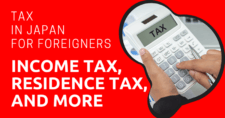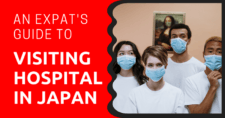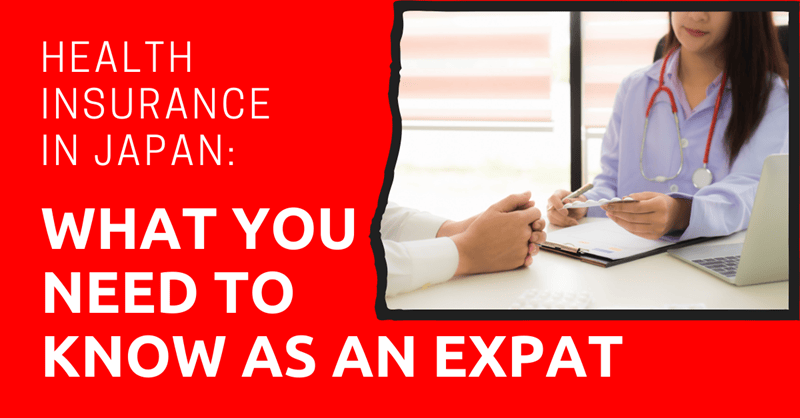
Unlike many countries in the world, Japan makes this easily attainable for everyone living there – regardless of their citizenship or financial situation.
In this article, we will explain the health insurance options available to expats in Japan.
This explanation will include expected costs, health coverage, any additional coverages available for those who qualify (Japan’s Mutual Kyosai System), insurance for the self-employed, insurance for the unemployed, retirees, foreign students, and some recommended companies that offer international and local private insurance coverage.
This article will take approximately 13 minutes to read. Don't have the time right now? No worries. You can email the ad-free version of the article to yourself and read it later!
Disclaimer: This article may include links to products or services offered by ExpatDen’s partners, which give us commissions when you click on them. Although this may influence how they appear in the text, we only recommend solutions that we would use in your situation. Read more in our Advertising Disclosure.
Contents
How Good Is Healthcare in Japan?
Renowned for efficient, thorough, and quality care, Japan’s health care system ranks number two in the world behind Singapore, with a health index score of 86.6.
Japanese society places a strong emphasis on the prevention of illness and injury; something you will experience for yourself through the mandatory annual checkups at a majority of companies where people are employed.
Moreover, while a healthy diet is certainly a large factor, Japanese people have one of the longest human lifespans in comparison to other countries in the world.
This means that as an expat in Japan, you’ll not only have access to a great healthcare system but also many other things that will contribute to your overall health.
Types of Health Insurance in Japan
There are many types of health insurance available in Japan, with the National Health Insurance (NHI) and Employee-Based Insurance (EHI) being the biggest.
Both of them are public insurance.
Unlike many countries in the world, private insurance isn’t popular in Japan. Most of the time, expats in Japan rely purely on public insurance.
The only exception is for those who are here for the first three months and do not have any access to public insurance yet.
National Health Insurance (NHI)
One of the three distinct health insurance plans in Japan is the Kokumin Kenkou Hoken 国民健康保険, or National Health Insurance (NHI).
The NHI is designed for people who have a valid residence card in Japan, have been there for more than 3 months, and do not have insurance benefits from their employer, including:
- Self-employed
- Business owner
- Freelancer (including YouTube, influencers, and content creators)
- Retiree
- Unemployed
If you receive social welfare services, you will need to enroll in the NHI.
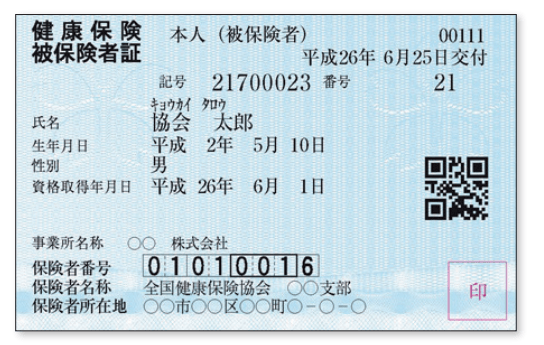
It basically means that if you or your spouse are not working in Japan, there’s a chance that you will have the National Health Insurance.
If you have a child, they must be enrolled in the NHI as well.
In case you are working in Japan, your public insurance is going to be the Employee-Based Insurance (EHI), known as Shakai Hoken (社会保険), which we will discuss later in the article.
NHI Coverage
The coverage is fairly comprehensive.
The main coverage of this insurance is that if you are injured or get sick, you only pay a portion of the cost.
This co-payment is calculated based on income and is either 20% or 30% of the treatments.
Generally, you should be covered for illnesses that are both chronic and acute (e.g., asthma, flu, diabetes, heart disease, cancer, cerebrovascular disease, etc.), health complications that arise from accidents, and long-term high-cost medical treatment.
To put it simply, you will be covered for all medical treatments that are deemed necessary by your medical doctor.
The NHI will not cover things like cosmetic surgery, teeth whitening, voluntary check-ups, abortions, infertility treatment, or braces.
Please keep in mind that your health coverage could be deemed null and void if you intentionally inflict injury or illness on yourself, or fail to follow the doctor’s instructions regarding your treatment.
Making an insurance claim is as easy as making an appointment and showing your insurance card to the clinic or hospital; they will file it with your insurance company if it is covered.
Premium Costs of NHI
For those using NHI, the premium costs are divided into three categories:
The first category is the basic premium package. It is income-based and calculated by multiplying the total residents’ tax paid by all NHI household members by 0.80. It is then computed against the number of insured household members; the annual premium is different for each household, but it will not exceed the cap of 580,000 Yen per year.
The second premium category is for the elderly (75 years or older). It’s calculated by multiplying the household’s total residents’ tax by 0.23, and the number of insured members. This also has a varying annual premium but is capped at a much lower 190,000 Yen per year.
The third category is strictly for long-term care, and it maxes out at an annual premium of 160,000 Yen. Interestingly enough, this third category has a layer of support that was introduced to Japan in 2000; known as Long-Term Care Insurance (LTCI), it covers all citizens and residents over 65. It is mandatory in Japan, and you are enrolled in this insurance automatically if you are over 40 years old.
NHI Payments
Regardless of your NHI, if you are the head of the household, you will be responsible for making payments.
These payments are divided into ten installments (it is your annual premium divided among 12 months).
NHI Application
Japan’s National Health Insurance is managed by local municipal governments.
You can apply at your local official government office within two weeks of becoming eligible for this type of coverage.
You may need to bring certain documents, such as a health insurance disqualification certificate. Check your local municipal government’s website to find out the exact documents you need. You need to speak Japanese or bring someone who can with you.
After the application, a health insurance card will be sent to you within a week. You need to show this card whenever you visit a clinic or a hospital.
In case you move to a new city, you also need to contact your local government office to update your NHI as well.
Employee Based Insurance (EHI)
If you are working full-time in Japan, you will need to get this Employee Based Insurance (EHI), also known as 社会保険 (Shakai Hoken).
It covers about 59% of the country’s population.
I will break it down for you so you can get a good idea of the costs and coverages in this section.
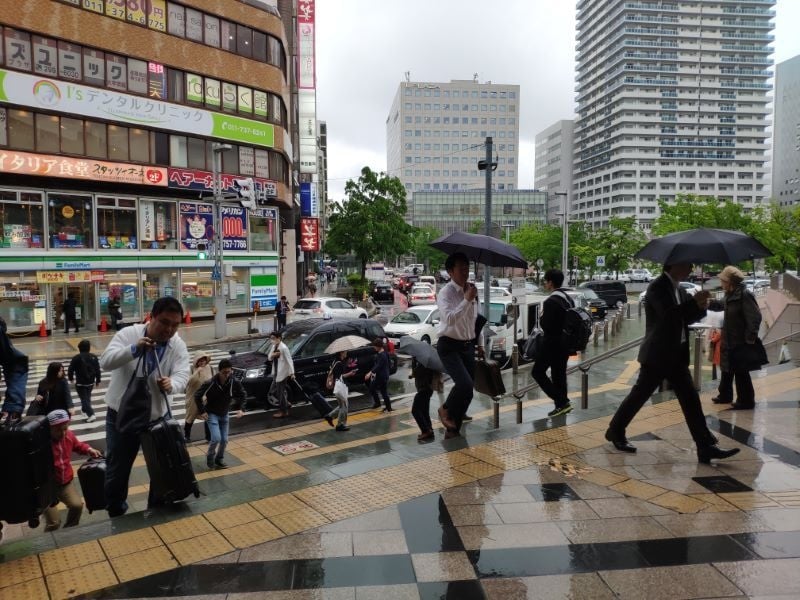
Shakai Hoken, more commonly referred to as Employee Health Insurance (EHI), is health insurance from your employer that ensures you receive the medical services you need.
All employers in Japan must automatically enroll you in EHI if you meet these conditions:
- You work 20 hours or more per week.
- You earn at least 88,000 Yen a month or 1,060,000 Yen a year.
- You sign a contract that employs you with that company for at least one year, and you are not a full-time student.
EHI Coverage
This medical insurance coverage includes all medical visits, medication, surgery, hospitalization, and dental costs. Insurance covers 70% of the cost, leaving you to pay the remaining 30%.
With EHI, as with any insurance sanctioned by Japan, you are able to visit any clinic or hospital in Japan.
It covers injuries and illnesses but does not apply to physical check-ups, cosmetic surgery, healthy pregnancies, or childbirth.
Other Important Benefits of EHI
Under EHI, high medical costs are compensated, as well as lost wages due to some kind of illness or injury (these are covered up to 60% of your average daily wages for approximately 1.5 years).
You are also automatically enrolled in a program in case of death, where a lump sum for burial costs, and financial compensation is allotted for dependents.
Moreover, you gain more specific pension benefits under Shakai Hoken (e.g., Elderly Pension) if you pay monthly premiums for 10 years or more – this is available from 60 years old.
The Premium Costs for EHI
EHI costs are individualized based on your family situation – these adjustments and allocations are shared privately between the employer and you.
You will be able to easily calculate them on your monthly paystub, and the costs will be transparent.
Typically, your health insurance premiums are deducted from your monthly salary before your employer send it your bank account, with a majority of the cost falling on the employer.
Again, the exact split of costs is different for everyone, but the employer’s share is usually much larger, making this insurance easier to afford for employees.
The premiums for EHI are also calculated based on your total annual taxable salary, with rates set by each Prefecture.
Here is a clear example of the rates for the Gunma Prefecture.
On average, the monthly premium for the medical insurance is equal to roughly 9.93% of your monthly taxable salary if you are aged between 20-40 years old, and 11.58% if you are 40-65 years old.
There is also an additional 1.65% added for Nursing Care Insurance (Kaigo Hoken).
EHI Application
Conveniently, the enrollment process is simple, and it is taken care of by your employer. After providing the necessary documentation to your employer, they will process the paperwork and present you with an insurance card.
Keep this card handy; it must be presented along with your identification at any healthcare facility you use in Japan.
EHI for Your Dependents
The people who share the same household as you can be considered your dependents (e.g., family members) if they meet the income requirement.
This detail is important to note; if a dependent (your partner, child, or other family member) makes a certain amount of money, they must get their own insurance, and are no longer covered under your EHI.
Here’s a good infographic on who you can add to your insurance plan.
To add a dependent to your plan, you can submit an application form that you can receive from your employer.
Mutual Kyosai System
The mutual kyosai Insurance system is reserved for employees that The Ministry of Education, Culture, Sports, Science and Technology deems are national public servants.
These include the Japan Sports Agency, the Cultural Affairs Agency, National University Corporations, and Inter-University Research Institute Corporations.
In a way, it is a type of EHI, but it has greater benefits and special perks.
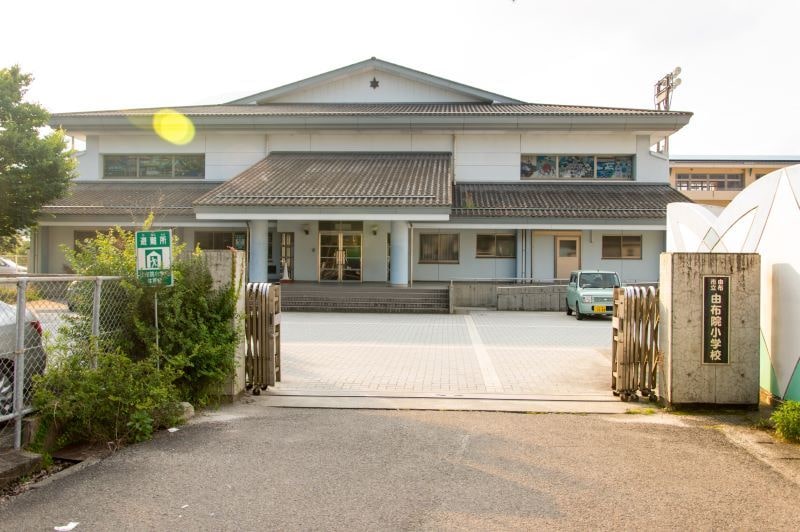
The mutual kyosai system operates on the insurance premiums of all of its members, collected from both the national government and independent administrative institutes.
It offers a comprehensive range of services, focusing on short-term benefits such as illness and injury coverage, and long-term benefits like retirement plans.
A prime example of mutual kyosai is a form of insurance offered to private school and private university employees called Shigaku Kyosai. It is one of the best insurance coverages that one can have in Japan.
Expats who have this Shigaku Kyosai are mainly those who are working at a university or a private school.
Mutual Kyosai Coverage
While it has the normal 30% co-pay for medical visits, it has a unique feature that caps surgeries and expensive medical procedures at very low rates.
Rates are subject to change and depend on the procedure, but a surgery that might normally cost 400,000 Yen could be reduced to a one-time payment of 25,000 Yen.
Mutual kyosai insurance also offers protection products that cater to different needs. They provide coverage against fire damage to homes (fire kyosai), health-related risks (life kyosai), accident insurance (personal accident kyosai), car crashes (automobile kyosai).
They even offer an Annuity Kyosai that provides annual payments after a specified age.
These are included in your insurance if you are eligible for this type of insurance.
Private Insurance
While Japan’s healthcare system is tied to residency and employment within the country, if you are only planning to stay for 3 months or less, you may want to have expat health insurance.
This is primarily for short-term visitors, world travelers, those people who may be going to multiple countries throughout the year, and other cases where someone is not setting up semi-permanent residence in Japan.
Many options exist, but just know that if you are here long term, there will be additional coverage you will pay on top of your mandatory Japanese insurance.
Also be aware that the hospital or clinic may have trouble processing payments with your chosen provider, causing you to have to pay 100% out of pocket up front before you receive medical treatment.
Health Insurance for Students
As a student, you will be enrolled in NHI if you are studying here for more than 3 months.
As a first-year student, with no part-time job, you can expect to pay around 2000 yen per month, which is extremely reasonable.
Health Insurance for Childbirth
As pregnancy and childbirth are not illnesses, they are not generally covered by health insurance. This includes pregnancy tests and mandatory monthly checkups.
Despite this, the costs associated with childbirth are almost free; anyone who has any type of medical insurance in Japan receives a “lump sum birth allowance” after giving birth.
It is almost like a gift provided by the government, and it amounts to about 420,000 Yen.
Now, on to You
Being able to navigate the ins and outs of the Japanese health insurance system with confidence is an important step to moving here.
It doesn’t matter if you are a freelancer, a full-time employee, or a student; there is certainly an insurance plan that will suit your needs.
I hope this brief overview helped you understand it a bit better, and gave you a clearer picture of Japan’s exceptional healthcare system.



